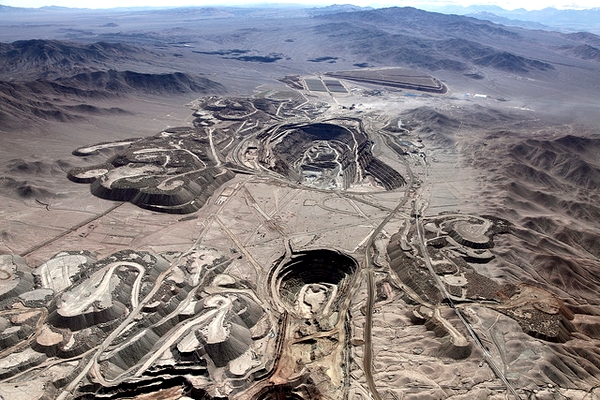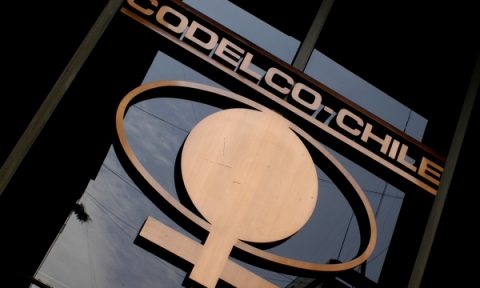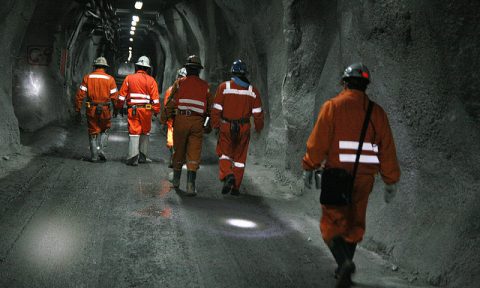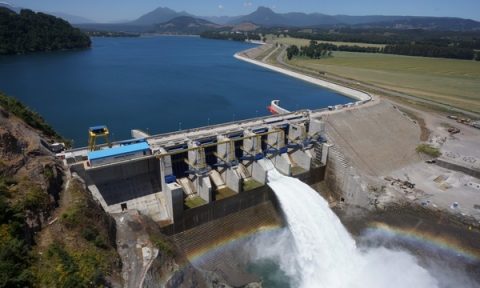Codelco’s steps after the Keller’s departure

The state mining company must invest U.S. $ 25 billion to maintain current production levels and thus their contribution to the treasury. The current internal crisis threatens this goal.
It was conflicting the Codelco’s Directory Session as of Thursday June 5th. It started at 8 pm, lasted almost six hours and after two grueling feedback- where the Director Blas Tomic’s position was the key for Thomas Keller output of the executive presidency was settled.
The complexity is that still no one to replace, in a time when experts and industry executives say it is key to the state mining company. In this context, industry executives say, is needed as never a person familiar with the company and great leadership, to execute the more investment millionaire plan of the Codelco’s history, reduce costs and achieve peace with unions .
Today Codelco is on everyone’s lips and not for good reasons. “The Thomas Keller’s departure is a triumph of Codelco workers, who have much interference in business decisions of the company and that is not positive, because unions are not to be running a company,” says Academic from Universidad Católica, Gustavo Lagos. The episode “shows that corporate governance is still in accommodation, in transition and has failed to decouple the business of the political cycle, which was one of his objectives,” said John Paul Schaeffer, former executive director of Codelco and today Director of the Think Tank Cesco.
This at a time when leadership is required, agree Lagos and Schaeffer. It also points out the very Minister of Mining, Aurora Williams, who notes that the state mining company has to make a huge investment plan for structural projects “that give Codelco future viability” and also “a significant reduction in costs “. The Minister referred to the five structural projects for U.S. $ 25 billion to be made before 2020. Chuquicamata underground operation and the new mine level at El Teniente.; Radomiro Tomic operational continuity with the new concentrator plant and the expansion of Andina besides Ministro Hales, who is ready.-
That is the core strategy of Codelco over the coming years, because only if those Chilean state initiatives are, the Chilean Company can still hold the title of largest copper producer in the world.
“We’ve raised since we assume as government that the challenge of who assumes as new CEO of Codelco is seeking agreements with the workers, “Williams said. “We do not talk about co-management”-she clarifies-“but of participation.”
However, Gustavo Lagos believes that the way it came out Keller does not end the conflict with the workers, but even the fans. “Codelco workers have a dispute with the owner of Codelco, which is the State of Chile,” said UC academic.
Key to maintain production
Codelco has an output of 1.7 million tons of fine copper and is the largest copper producer in the world, with 11% of the global total. To maintain that level is critical push through structural projects, as internal documents held in mining company.
As one CEO from a large international company says, “it is not to lead to lead, but with the same production Codelco guarantees that its contribution to the treasury will remain similar to current levels.” Between 2010 and 2013, the company delivered more than U.S. $ 25,240 million before tax and Reserve Law (for which 10% comes from exports to the Armed Forces) and in its history has provided over $ 110 billion, said reserved reports from the state company.
It is not easy to keep the seat of the Chilean corporation. In the world, who follow Codelco in production ranking are Freeport MacMoran, BHP Billiton and Glencore and all have planned expansions.
To make the investments it is necessary that projects are profitable and which achieves this requirement must have lower production costs and staffing, explains Gustavo Lagos. “Only then the State of Chile will give money to Codelco”, he stresses.
Keller and his difficult relationship with unions
In the last three years have held recruitment programs, productivity and retirement programs to improve competitiveness which were resisted by the Codelco’s unions, especially the ones from Chuquicamata.
With these changes, if in 2010 the average age of workers of Codelco was 47.5 years in 2013 had fallen to 45.5 years. The idea is to bring state company of the industry average, which is hovering around 42.-
The biggest pitfall is the retirement plans “for professionals and workers redundant or from very low productivity,” Codelco allowed. Between 2010 and 2013 lowered their own endowments in Chuquicamata, Salvador, Ventanas,El Teniente and Headquarters.
Between 2010 and 2013, Codelco faced 28 collective bargaining and, in most, achieved its objectives: removal of collective bargaining agreements and conditions, according to the company, limit the ability of management to reduce operating costs. But where did not achieve its objectives was in Chuquicamata. Unions from this division managed to maintain unchanged a Co-Government Scheme that even simple measures such as a shift change, cannot be decided freely by the administration. So much so that if one supervisor changes the shift of a worker without a 24 hours in advance notice, must pay him 8 hours of overtime.
The last collective bargaining in this centenary site was closed in December 2012 and signed agreement included, among other benefits, an end dispute bonus of about $ 16.8 million per worker. All this, in a context in which production costs have risen because of higher electricity rates and the persistent decline in ore grade.
In 2011 this division ceased to be the most productive of Codelco, when it was surpassed by Radomiro Tomic and since 2013, by El Teniente.
The problem of Chuquicamata, say in Codelco, transcended the division itself. The difficulties of the outgoing CEO Thomas Keller were originated largely by the opposition of this job to retirement plans and even changes in the organizational structure.
Chuquicamata workers wanted to join the Radomiro Tomic and Ministro Hales at Codelco Norte, but the latter tasks object because productivity low.
¿Finance or not to finance Codelco?
Codelco defined that cannot over-borrow to keep the investment grade having the corporation and giving it access to bank financing at the lowest cost in Latin America, says the company.-
To develop their projects preserving their risk classification, Codelco needs to start a financing plan that involves capitalizing $ 1,200 million in 2014 followed by $ 800 million each year for 2015, 2016 and 2017.
In addition, the plan includes a debt at the end of 2018 of $ 16 billion.
The Ministry of Finance has indicated that a formula to capitalize the company would be to use a portion of accumulated SWFs resources, amounting to U.S. $ 23 billion, or dip into the resources that come from the Reserve Law Copper, where there is a surplus of U.S. $ 5,254 million. But the requirement is that Codelco lower costs and investments are profitable, which again refer the problem to the workers.
U.S. $ 1,183 million in environmental investments
The Environmental NGOs have repeatedly denounced the “soft hands” of the authorities before Codelco on environmental issues, an allegation that the company denied. But today the requirements in this area are greater and thus recognizes the company internally. Last year the state company was subjected to 20 audits of the Superintendence of the Environment, who even threatened to close Ventanas.
Codelco knows that today the environmental issue is more sensitive than ever and has therefore invested in sustainability U.S. $ 1,183 million between 2010 and 2013, reported the company.-
Source: El Mercurio











